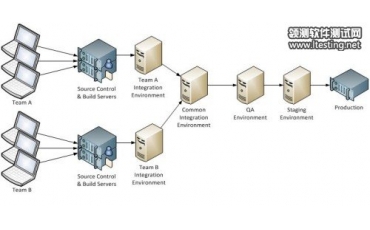SQL*Report 1.1 Error Messages And Codes
One of the RPT commands does not have enough arguments, or contains a carriage return. For example, a macro with no name: This error indicates that a variable has been declared or a macro has been defined with an illegal name. The rules for naming variables and macros are on p.59. This error indicates that a label has been used which has an illegal name. The rules for naming statement labels are on p.59. This error will oclearcase/" target="_blank" >ccur if a two periods (..) are found on a line by themselves, outside of a macro. This indicates the completion of a macro definition. (p.101-2) This error will occur if the report uses the same label name more than once in the same procedural macro. Since label definitions are local, the same label name may be used in different macros. Also, only the first 30 characters of an identifier name are significant. (p.59,115) This error will occur if the report uses the same macro name in more than one DEFINE statement. Also, only the first 30 characters of an identifier name are significant. (p.59) This error will occur if, in a REPORT or EXECUTE statement, the same SQL macro is called recursively. This message has obvious meaning. More than one variable with the same name have been declared in the report. Also, only the first 30 characters of an identifier name are significant. (p.59) This error will occur if a DIV statement attempts to divide a number by zero, which is undefined. (p.123) Legal display formats for DECLARE statements are found on p.96-99. Check for typos. Legal display formats for DECLARE statements are found on p.96-99. Check that alphanumeric variables are not declared as more than 255 characters. This may occur if the report has an IF statement where the expression contains blank characters, but is not enclosed within double quotation marks. For example, .if &counter = 1 then label1 (p.117) The statement refers to a variable that has not been declared correctly (using a DECLARE statement) within the report, or you have used a literal value where a variable was expected. For example: .EQUAL counter 1 (the SET command should be used to do this). Also, this error will occur if a label is used outside of a procedural macro. Be sure to check for typos. (p.95-9, 115) This error, along with RPT-0073, will occur if the report uses the SET statement incorrectly. For example: This error occurs if a macro definition is not ended by two periods (..) on a line by themselves. This may also cause errors RPT-0011 and RPT-0035 to occur. (p.101-2) The syntax of the IF statement is incorrect. Make sure that all program variable names are preceeded with an ampersand. This could be caused by a number of errors in the SQL statement of a select macro. Try running the SQL statement in SQL*Plus to determine what is causing this error. Also, check that the select macro only contains the text of the SQL query and nothing else (for example, a Table (#T) command). This error occurs if an EXECUTE statement attempts to execute a macro that is not defined in the report. Check for typos. (p.105-6) Try breaking up the SQL statement. The limit in version 1.0 is 2000 characters and the limit in version 1.1 is 10,000 characters. This error will occur if the select macro is missing an INTO clause. (p.102-4) For select macros using set operations (Union, Intersect, or Minus) refer to p.60 for the correct usage of an INTO clause. Also, in version 1.1.5, this error will occur if a column in the select list has the word "FROM" as part of its name. This error will occur if a REPORT statement contains a body macro which has not been defined in the report. This error will occur if the report is disjunctive (where two or more select macros are specified in one REPORT statement joined by ANDs or ORs) and more than 4 select macros have been specified. (p. 112) This error will occur if the report is disjunctive (the <SELECT macros> argument to the REPORT statement is enclosed within double quotes), but is missing an AND or an OR. (p.112, 114) There are a number of causes for this error. Look for typos, such as references to macros with different spellings. Indicates that a STOP statement was encountered in the report. These messages indicate where the error probably occured. See RPT-0026. These messages indicate that an Oracle error has occured. The following error will occur: conversion error: Month must be between 1 and 12 if a date variable is 'asked' for, but the month is not between 1 and 12. The following error will occur: conversion error: Year must be between 00 and 99 if a date variable is 'asked' for, but the year is not between 00 and 99. The following error will occur: conversion error: Day must be between 1 and last of month if a date variable is 'asked' for, but the day is not between 1 and the last of month. These messages will appear, along with RPT-0066, RPT-0074, and RPT-0075, if the syntax on the RPT command line is incorrect. (p.57) This message tells you the version of the ORACLE database that the report is using. The input file specified on the RPT command line does not exist or cannot be opened. Check for typos. (p.57) These messages have obvious meaning. Normally, you do not need to worry about the number of lines in the interim file. Indicates that the report program has been terminated, because errors have occured. Try increasing the number of open cursors. See p.32 and p.231 of the ORACLE Database Administrator's Guide 5.1. The following error will occur: conversion error: Date format must match date type if a date variable is 'asked' for, but the format of the input is not MM/DD/YY. (p.126) See RPT-0023. This error will occur, in version 1.1.8, if the select macro is missing an INTO clause. (p.102-4) This error will occur, in version 1.1.9.4, if the data of the variable in a .set is greater than the format width defined for the column it is to be printed. The data will be truncated.
SQL*Report Messages:RPT-0000 to RPT-0078:RPT Error Messages And CodesSQL*Report Messages:RPT-0000 to RPT-0078:RPT Error Messages And Codes
RPT-0000 too few arguments .DEFINE SELECT empno, ename
INTO empno, ename
FROM emp
..
RPT-0001 argument overflow RPT-0002 illegal variable or macro name RPT-0003 illegal label name RPT-0004 formatting: no room to insert commas RPT-0005 ".." command while not in macro RPT-0006 *** No digits or decimals specified RPT-0007 *** Too many suffixes RPT-0008 label multiply defined in macro RPT-0009 macro has already been defined RPT-0010 macro call nesting level exceeded RPT-0011 nested macro definition RPT-0012 *** Ignoring following source lines (up to '..'): RPT-0013 variable multiply declared -- this declaration ignored RPT-0014 mainline RPT program contains no executable lines RPT-0015 *** <x> in illegal position RPT-0016 divide by zero ( <statement> ) RPT-0017 formatting: 2nd decimal point is illegal in <x> RPT-0018 illegal display format <format> RPT-0019 illegal display format <format>: out of range RPT-0020 label <label> is undefined RPT-0021 number too large for printing or assignment RPT-0022 variable <name> is not declared RPT-0023 conversion error: <error> .SET variable1 variable2.
The SET statement sets the value of a variable equal to a literal value. To set the value of a variable equal to the value of another variable, use the EQUAL command. Also, see RPT-0049, RPT-0050, RPT-0051, and RPT-0072. (p.100-1) RPT-0024 macro <name> not properly ended RPT-0025 <x> to string variable. Result truncated RPT-0026 cannot execute if expression: *** <statement> This will also cause the error ORA-704: invalid column name. Also, an IF statement cannot be more than 132 characters long. To get around this problem, shorten variable names, or break up into more than one IF statement. (p.117-8) RPT-0027 if: numeric variable <name> has non-numeric value RPT-0028 macro <name> is not declared RPT-0029 cannot execute SQL statement: *** <statement> If you accidentally include a semicolon at the end of the select statement, this error will occur along with the error ORA-911: invalid character. (p.102-4) RPT-0030 SQL macro <name> cannot be executed RPT-0031 too many variable references: variable <name> ignored RPT-0032 SQL statement in macro <name> is too long RPT-0033 SELECT macro <name> has no FROM clause RPT-0034 missing report name: <name> RPT-0035 body macro <name> unspecified or undeclared RPT-0036 too many parallel reports RPT-0037 found <text> where "AND" or "OR" was expected RPT-0038 user errors prevent exeuction of report RPT-0039 Stop. RPT-0040 first argument not numeric or others not date types RPT-0041 *** *** ERROR at line <n>: RPT-<error>: <text> RPT-0042 *** Source: <line> *** RPT-0043 RPT internal error: ufree(<x>) - bad address RPT-0044 ualloc: out of heap space (needed <x>) RPT-0045 insstr: destination too small RPT-0046 *** ORACLE error: <error> RPT-0047 *** Operation : <operation> RPT-0048 *** Function : <function> RPT-0049 Month must be between 1 and 12 RPT-0050 Year must be between 00 and 99 RPT-0051 Day must be between 1 and last of month RPT Usage Usage is: RPT inputfile outputfile user/password options
Options are:
-n Number of open cursors (e.g., -n10 for 10 cursors)
-? Display RPT version
-x eXecute report even if syntax errors are found
-a Number of rows per array_fetch (e.g., -a20 for 20 rows)
-o format numbers using Old RPT formatting rules
RPT-0056 Connected to <database> RPT-0057 can't open <file> for input RPT-0058 can't create <file> for output RPT-0059 line cannot be executed due to errors reported earlier RPT-0060 label not allowed on this command RPT-0061 <n> lines written to output file RPT-0062 <n> errors encountered and written to error file RPT-0063 <n> lines read from input file RPT-0064 Unknown format type RPT-0065 Report aborted RPT-0067 error during ROLLBACK RPT-0068 error during COMMIT RPT-0069 you are not authorized to use SQL*Report RPT-0070 WARNING: your SQL*Report license will expire soon RPT-0071 Maximum open cursors exceeded RPT-0072 Date format must match date type RPT-0073 Illegal number RPT-0076 SELECT macro <name> has no INTO clause RPT-0077 Value entered or set for <variablename> is greater than declared -- value truncated RPT-0078 File system error.





